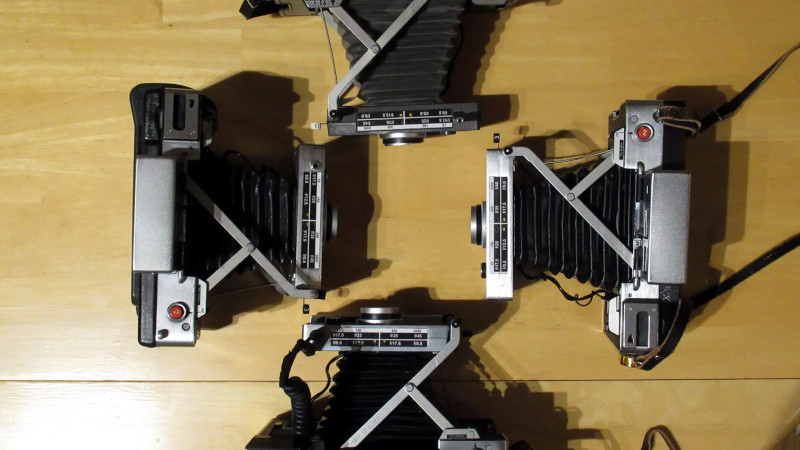There once was a time when all but the most basic of fixed focus and aperture cameras gave the photographer full control over both shutter speed and f-stop. This allowed plenty of opportunity to tinker but was confusing and fiddly for non-experts, so by the 1960s and ’70s many cameras gained automatic control of those functions using the then quite newly-developed solid state electronics. Here in 2023 though, the experts are back and want control. [Jim Skelton] has a vintage Polaroid pack film camera he’s using with photographic paper as the film, and wanted a manual exposure control.
Where a modern camera would have a sensor in the main lens light path and a microcontroller to optimize the shot, back then they had to make do with a CdS cell sensing ambient light, and a simple analog circuit. He considered adding a microcontroller to do the job, but realized that it would be much simpler to replace the CdS cell with a potentiometer or a resistor array. A 12-position switch with some carefully chosen resistor values was added, and placed in the camera’s original battery compartment. The final mod brought out the resistors and switch to a plug-in dongle allowing easy switching between auto and switched modes. Result – a variable shutter speed Polaroid pack camera!
Sadly the film for the older Polaroid cameras remains out of production, though the Impossible Project in the Netherlands — now the heirs to the Polaroid name — brought back some later versions and have been manufacturing them since 2010. Hackers haven’t been deterred though and have produced conversions using Fuji Instax film and camera components, as with this Polaroid portrait camera, and [Jim]’s own two-camera-hybrid conversion.
















Too bad the new film from the impossible project is thicker than the original. In their new packs they can only fit 8 shots VS Polaroid’s 10. I’ve not found any information on what they use for batteries in the film packs.
They make a new Polaroid branded camera that uses what they call i-Type, without a battery. Looks like it’s the same as their SX70 film. Without the battery they should be able to stuff 10 shots in but i-Type is also 8 shots. $16.99 for i-Type vs $19.99 for SX70.
Some of the old polaroid rangefinders can have a graflex back adapted to them so that you can shoot 4×5 film in a relatively compact package
Wrong polaroid.
The Impossible Project/Polaroid of today produce Integral film: it’s one sandwich of paper and chemicals, is exposed as one object, ejected as one object, is developed as one object, and stays as one object with all light-sensitive layers and chemistry self-contained. Exposure of the internal ‘negative’ occurs through the ‘positive’ layer (which is transparent-ish at time of exposure) leading to a low maximum resolution. This film is still in production by Polaroid.
The film used in older Polaroid cameras such as in the article is ‘Pack Film’, or more generally ‘Peelapart Film’ (the same film, but provided as singles rather than packs). The film is composed of an unfolded positive and negative with developing chemicals attached. The negative is exposed directly, then folded against the positive when the film pack is pulled out of the camera (which also spreads the chemicals over the negative and positive). When development is finished, the two are peeled apart again to leave a positive (ready for display) and a negative that can be washed of any remaining chemistry and recovered. New prints can be made from this negative, and as it’s basically a piece of medium format film it can be of very good quality depending on the camera used. Packfilm is very nearly dead. Fuji no longer manufacture it (and they were the last holdout) and vintage FP100 runs for ~£100 a pack, and One Instant produce hand-made single-shot ‘packs’ using legacy materials and chemistry for ~$30 a shot.
The final 20 years of commercial peal apart polaroid was for making fake IDs.
Ask me how I know…
Technology moves on.
Technology doesn’t have a mind of its own. People do. Technology is either a tool or a dogma. Sometimes both. But not all technologies are created equal. Some require more involvement, skill and patience, others don’t. When we as a society want convenience, allow profits to be more important than cultural meaning and prefer consuming simple experiences over creating our own, manufacturers have to shift their attention. As a design college, we teach our students woodworking with CNC tool as well as the traditional way. It’s for the benefit of our society that both approaches can exist simultaneously.